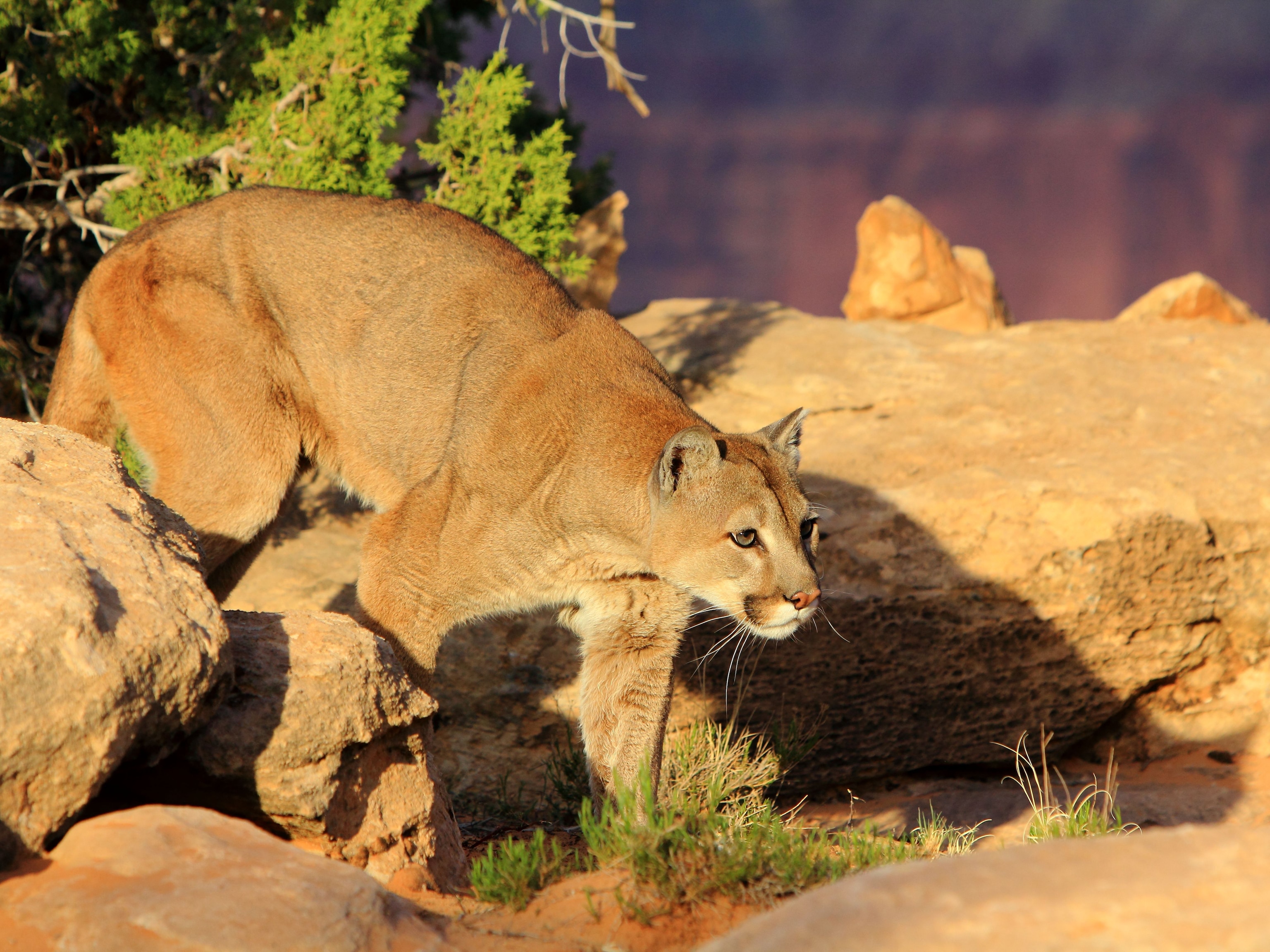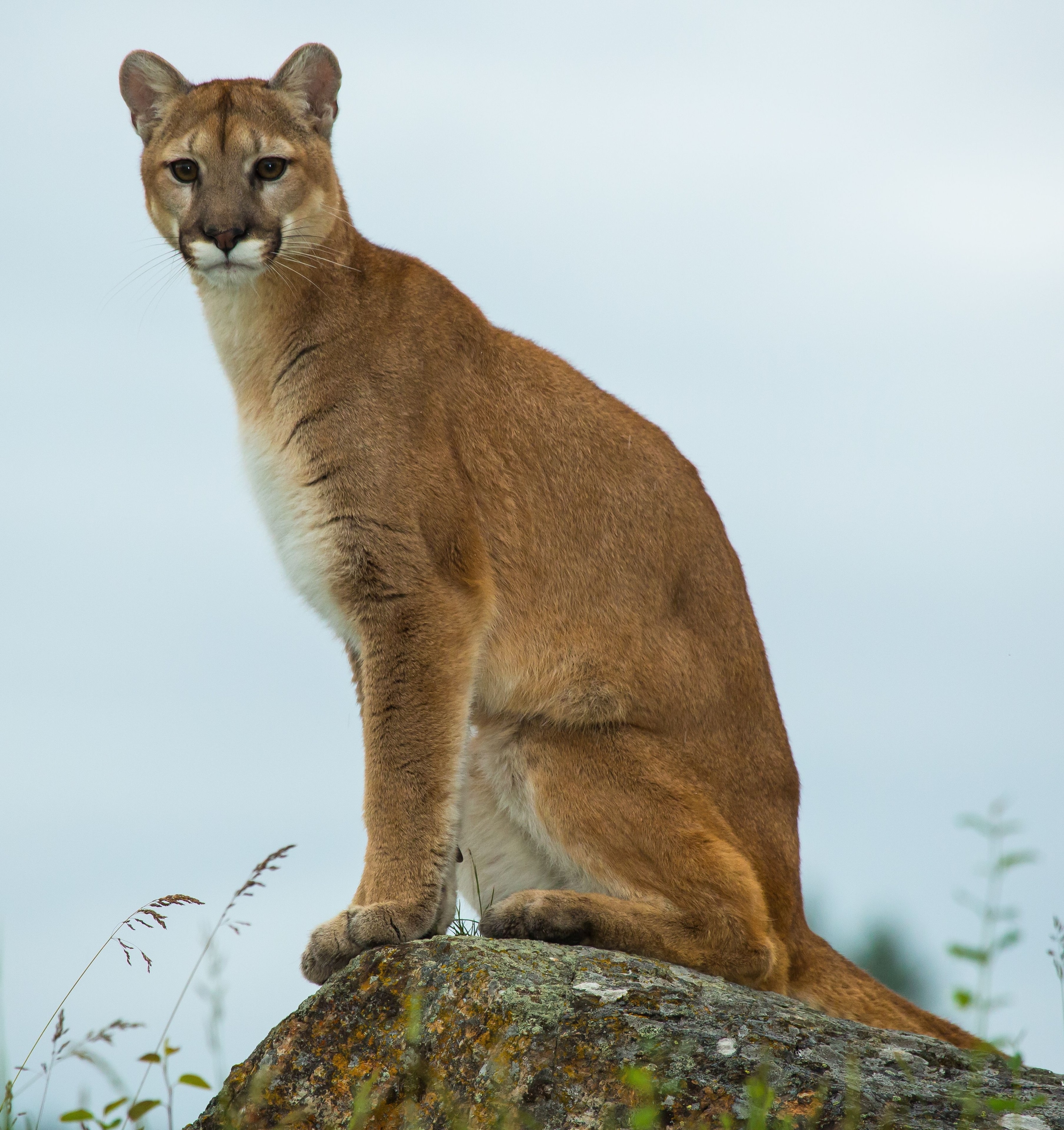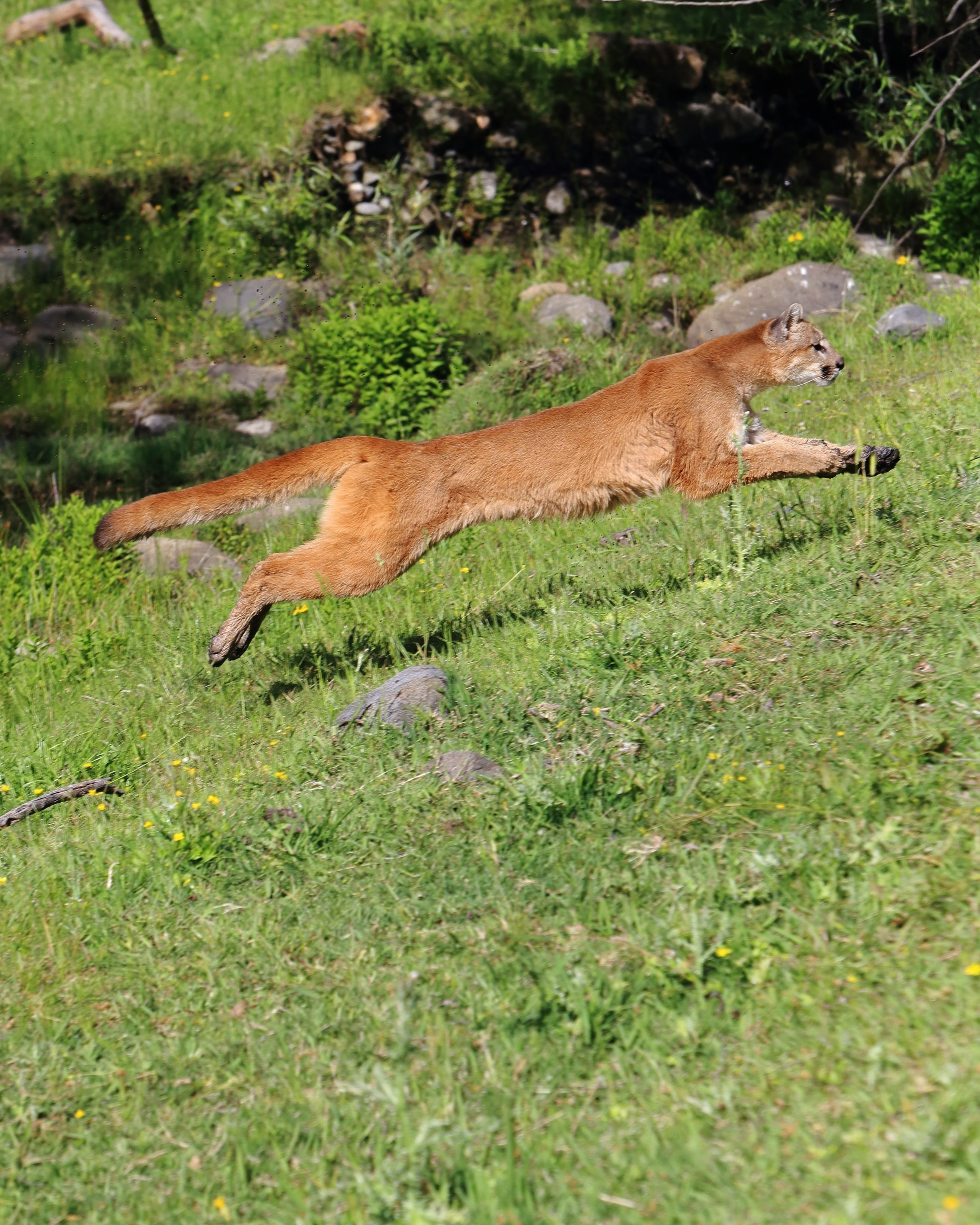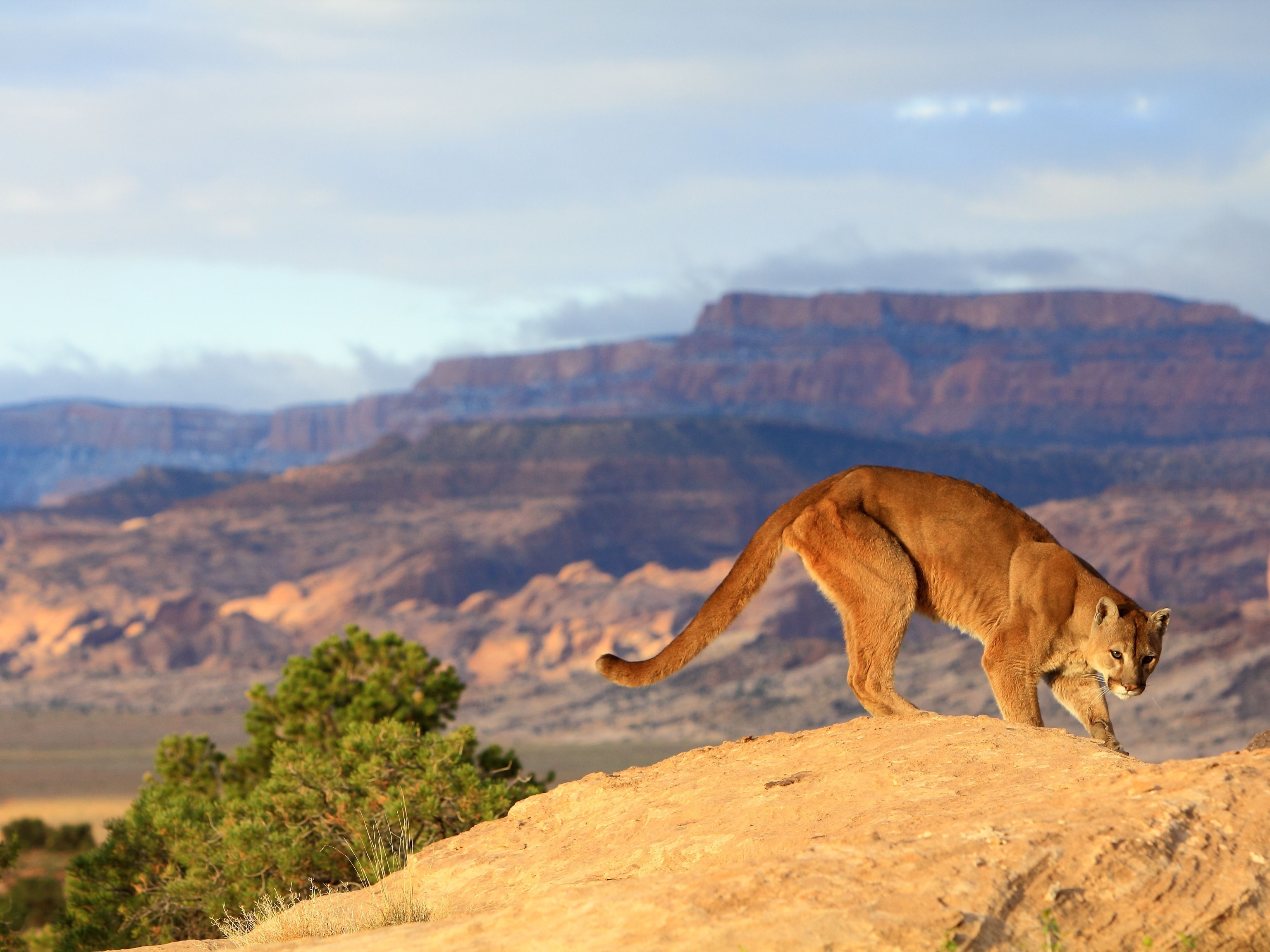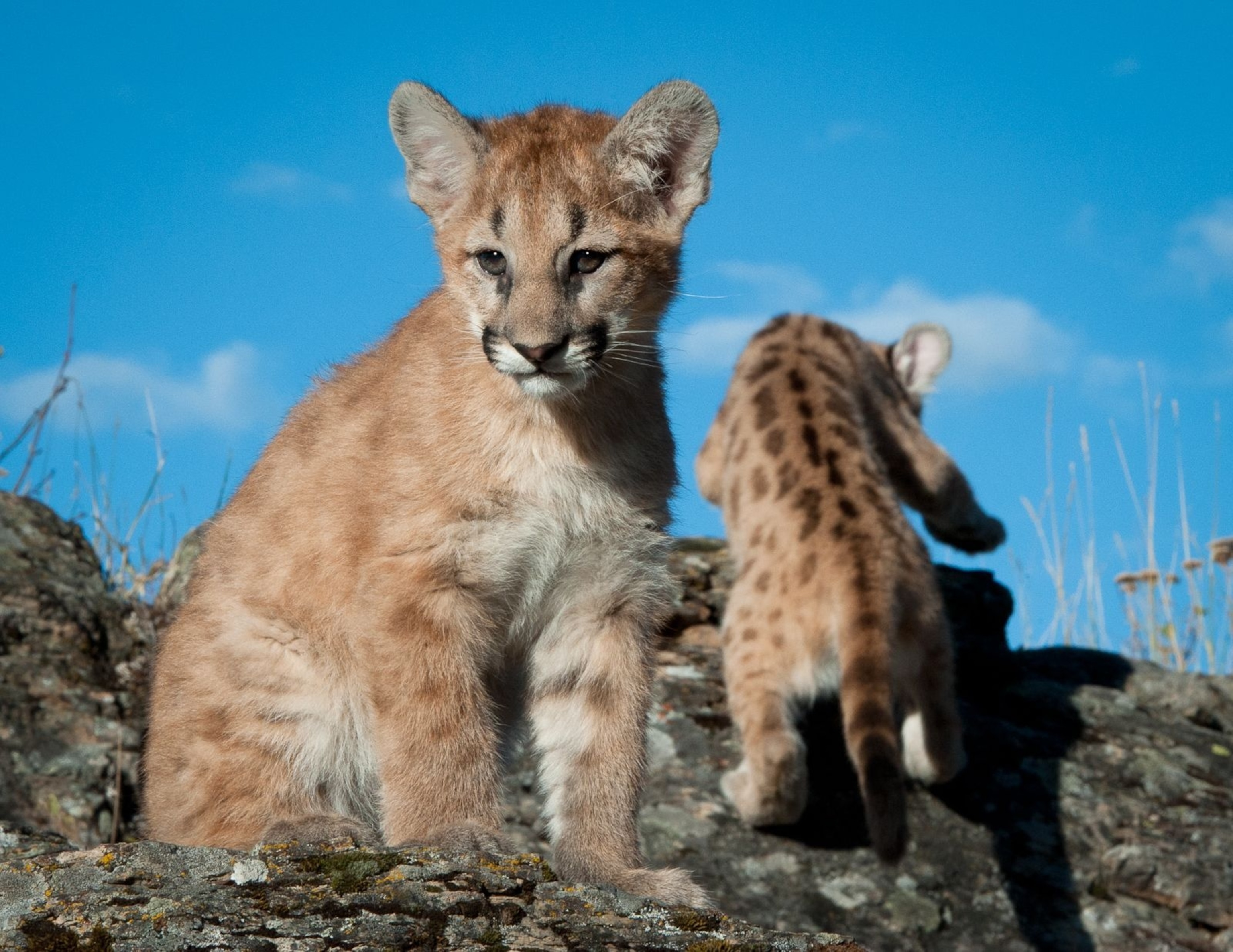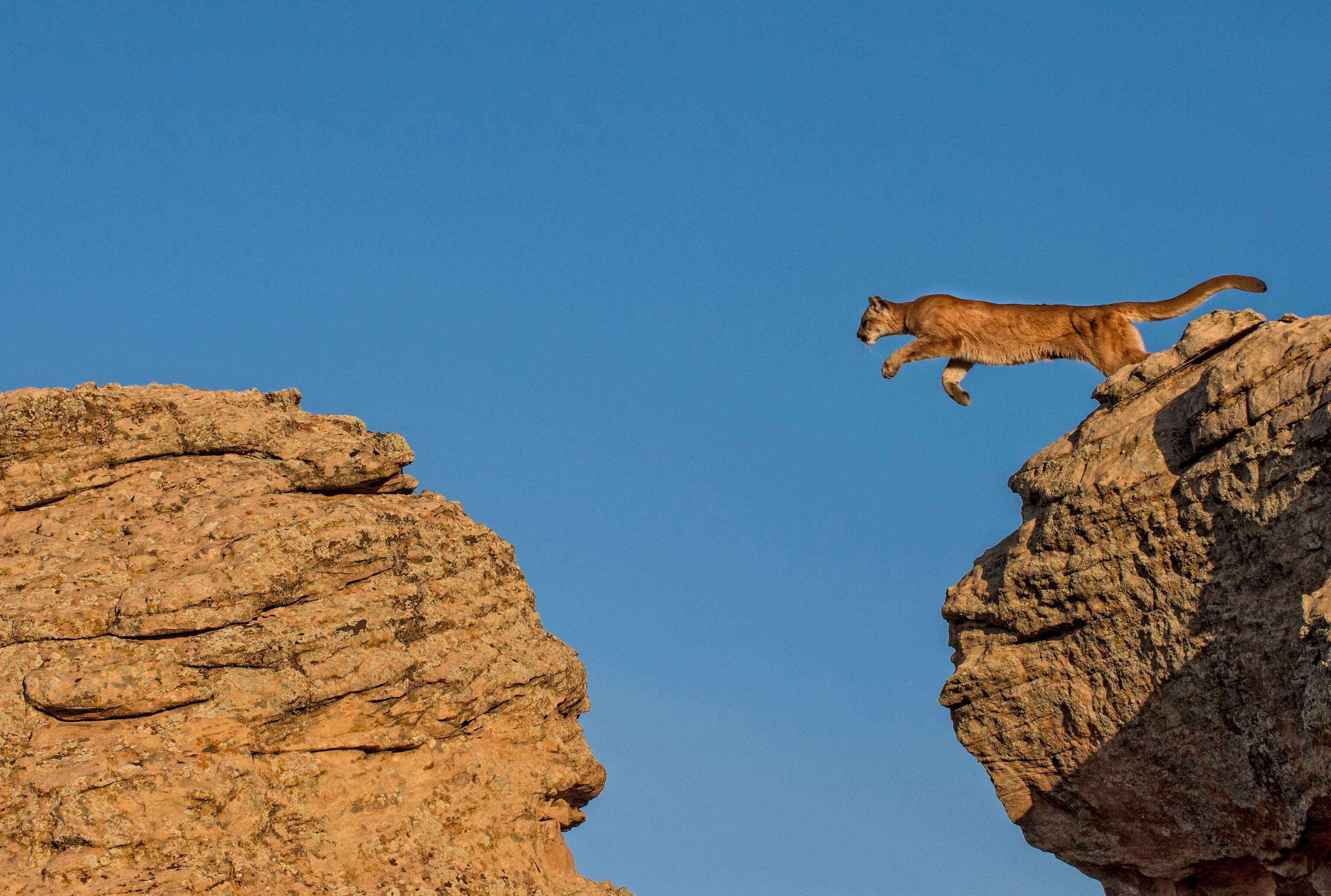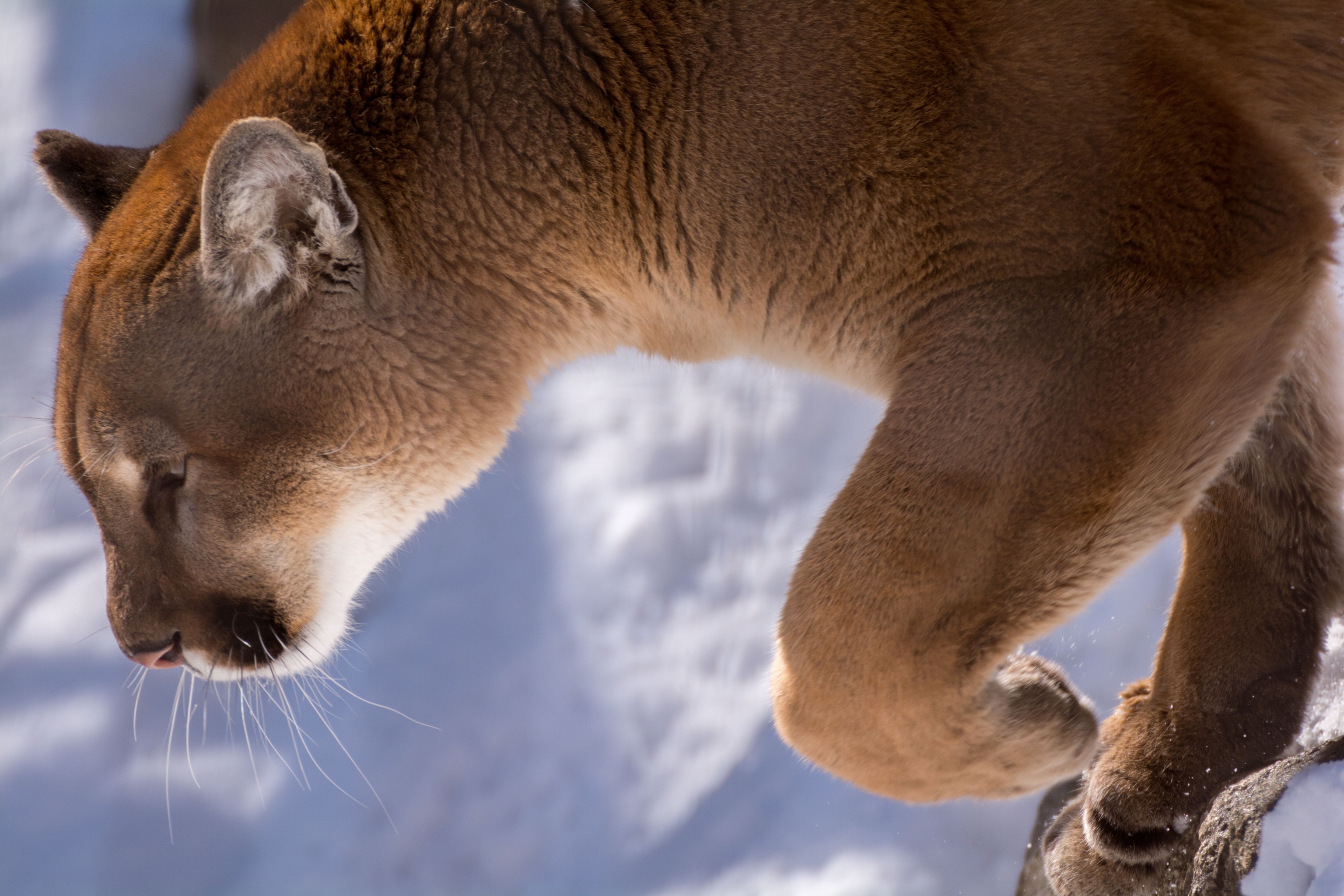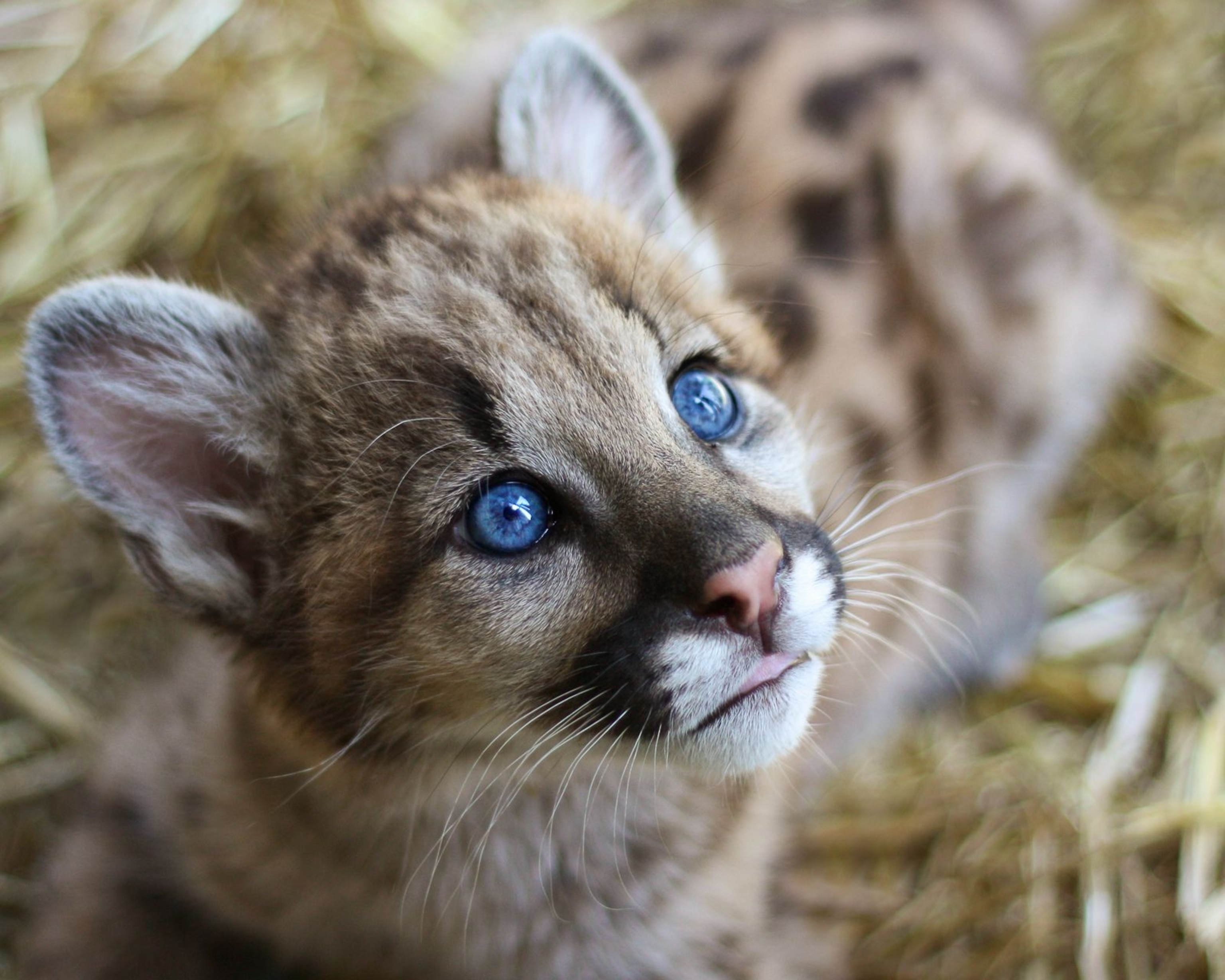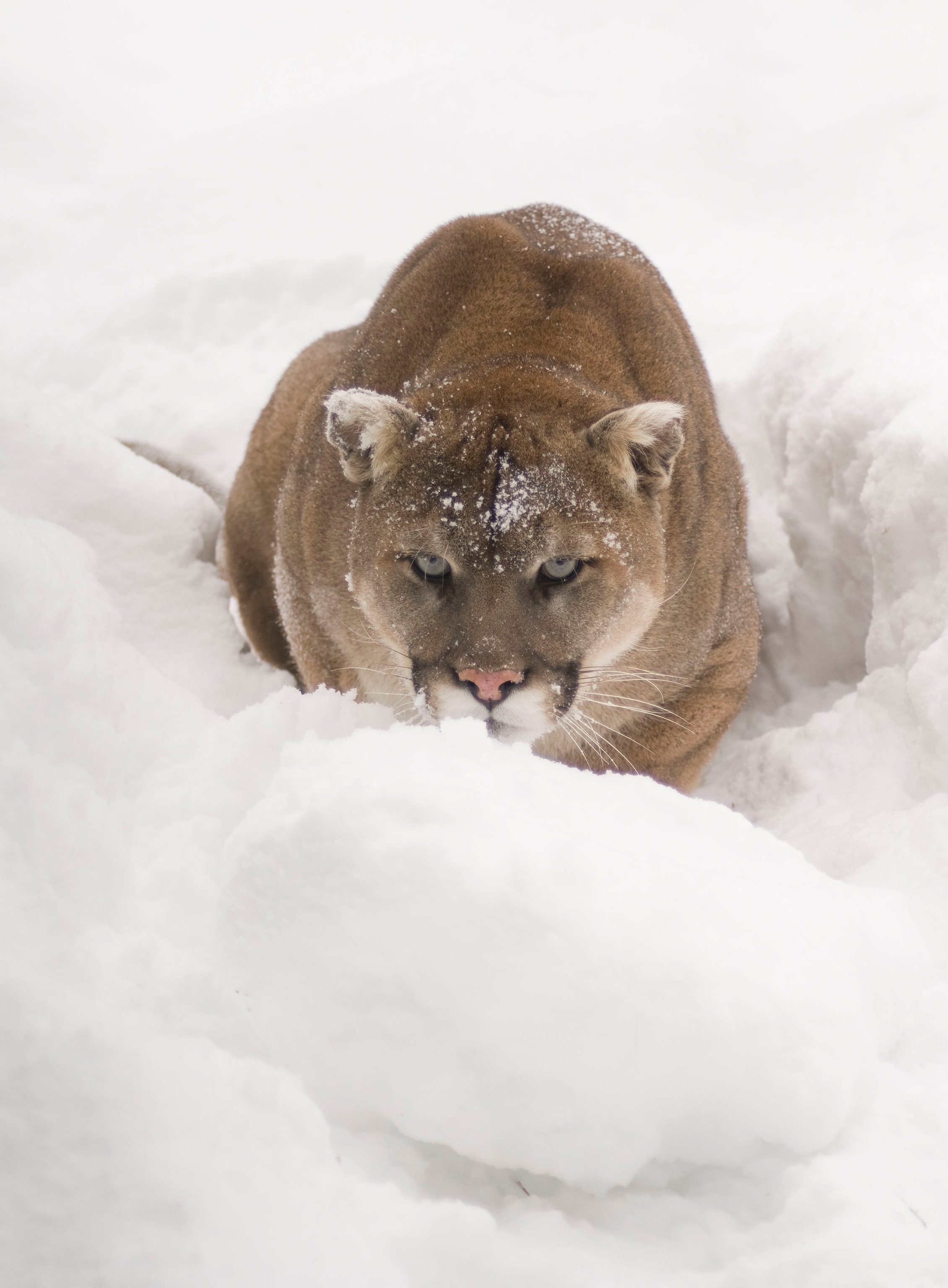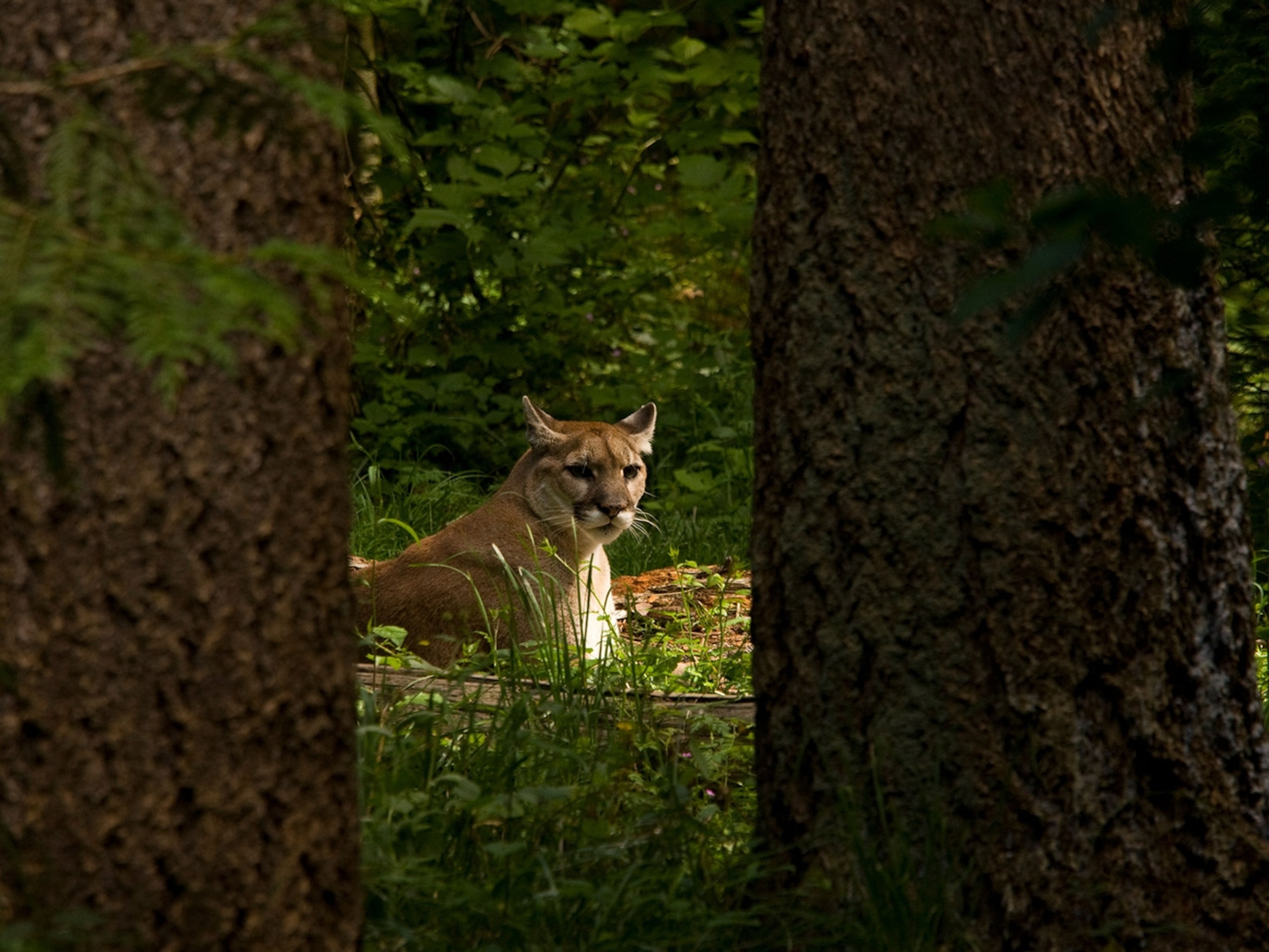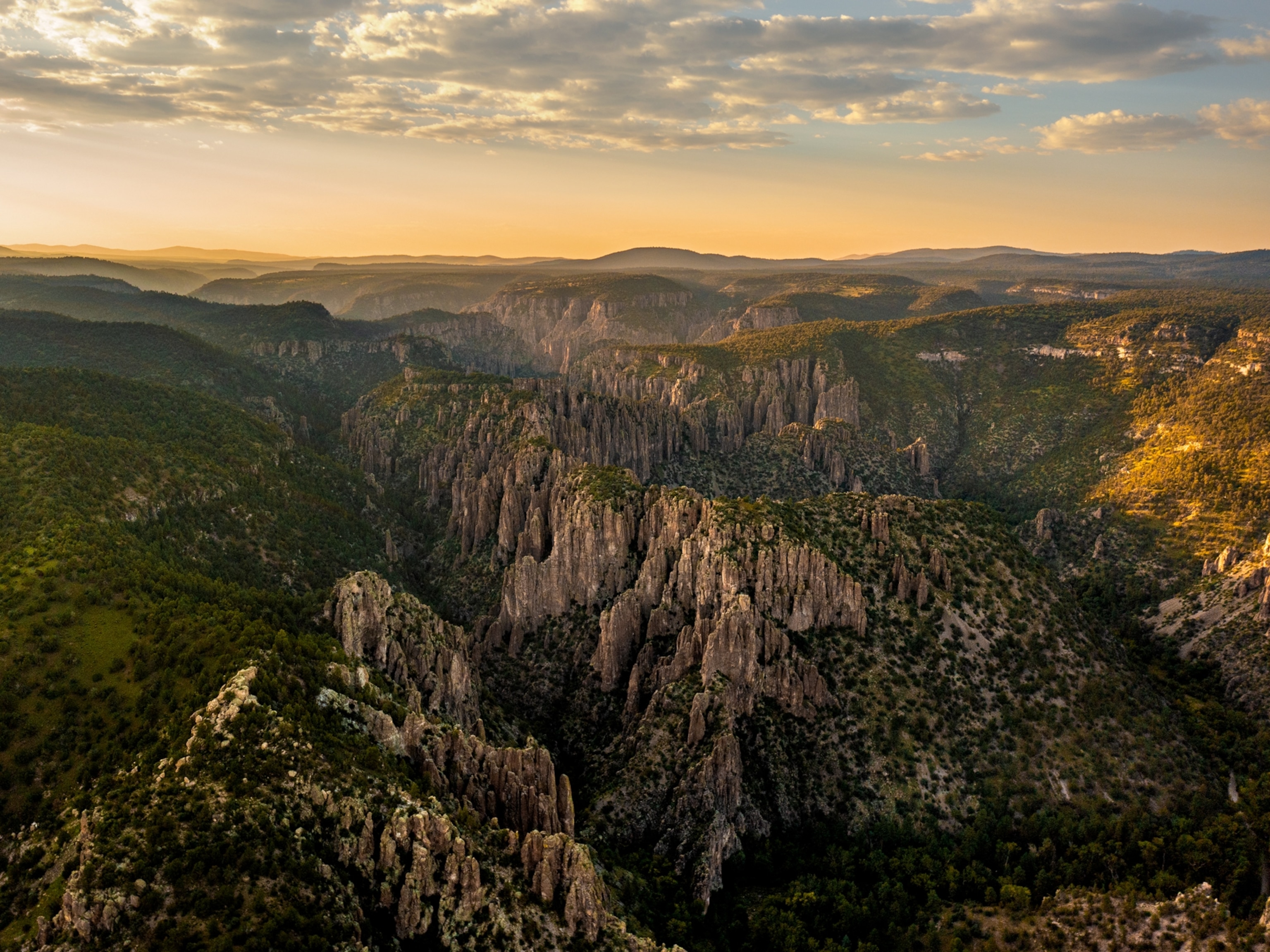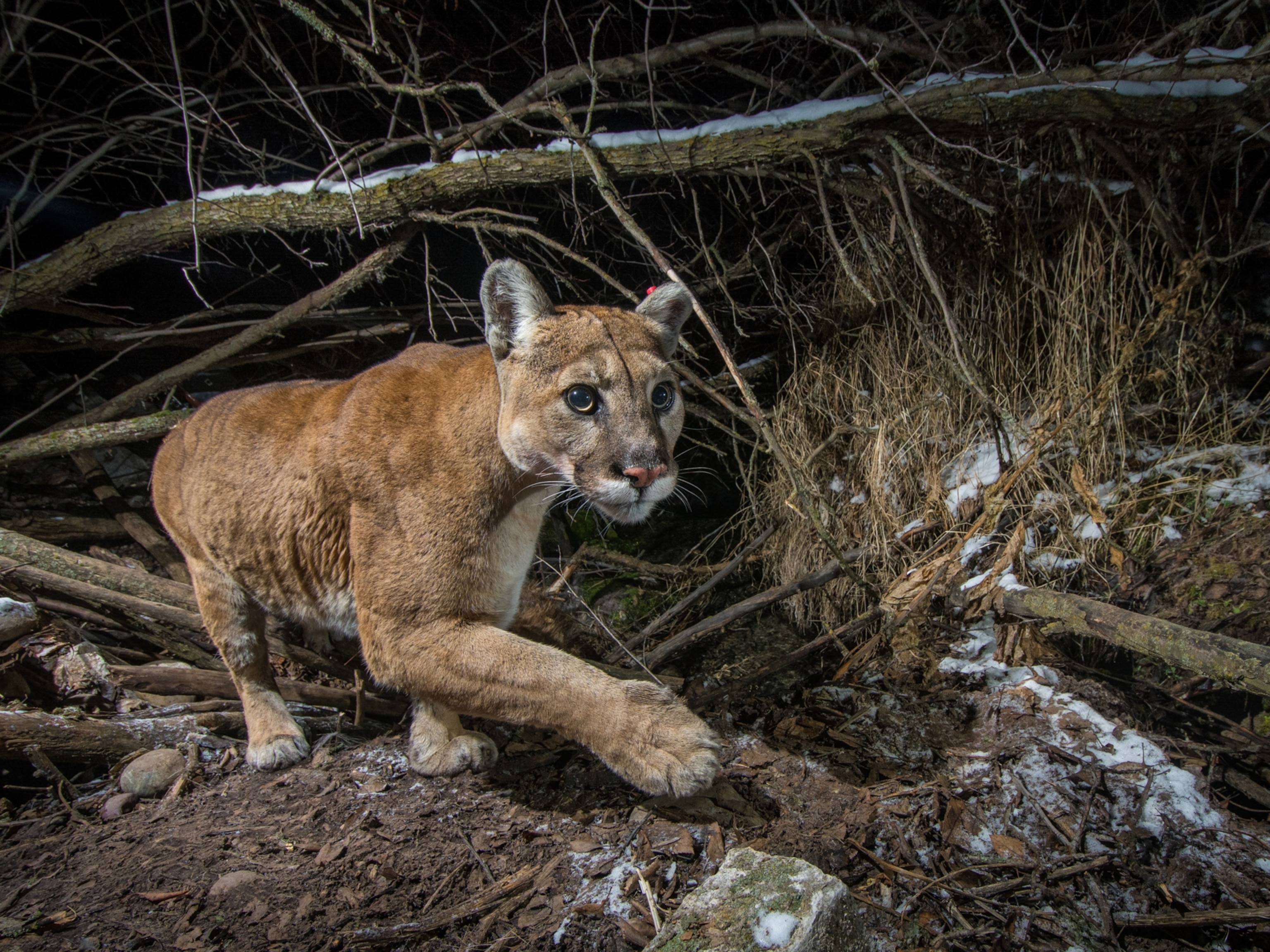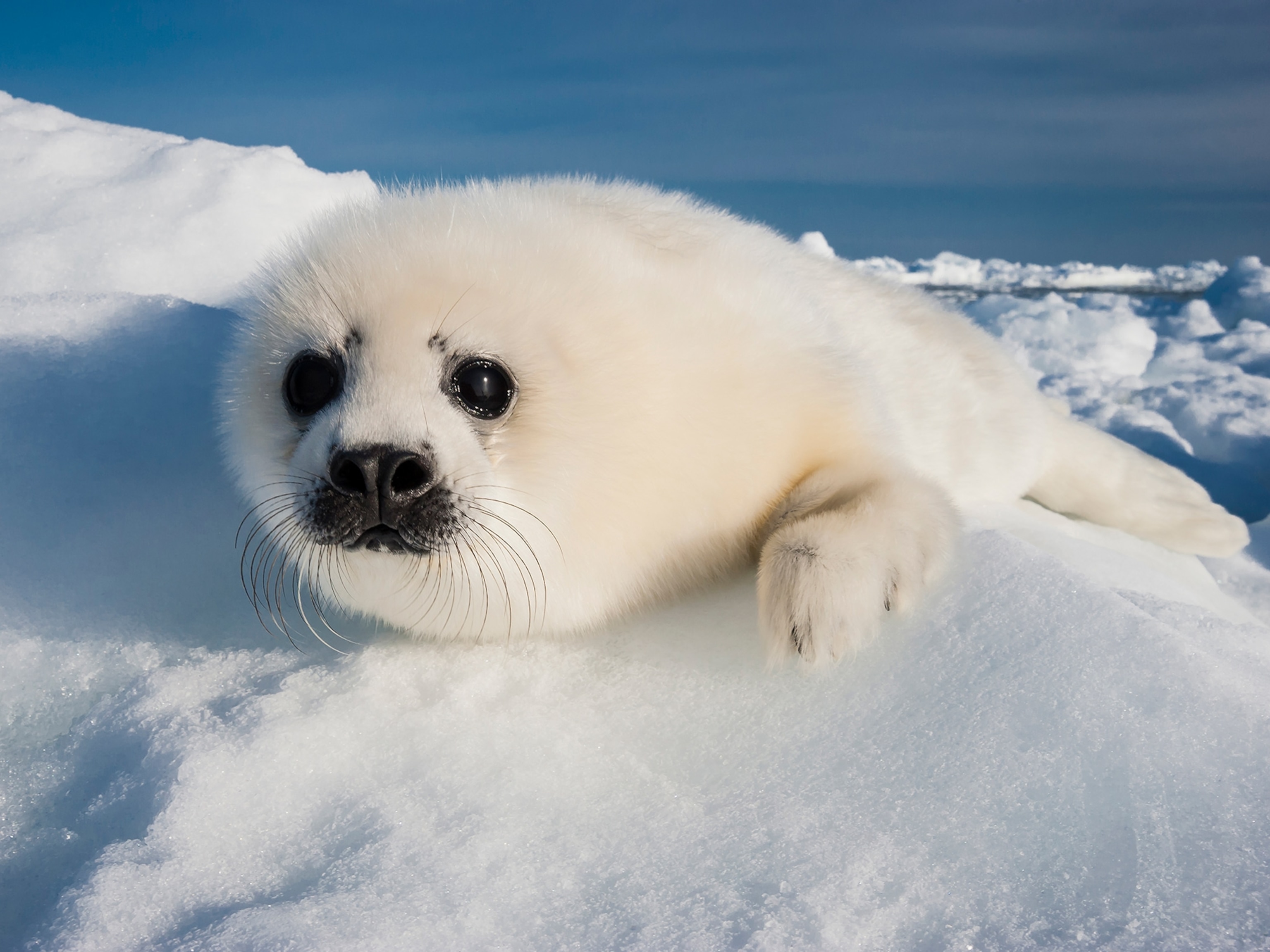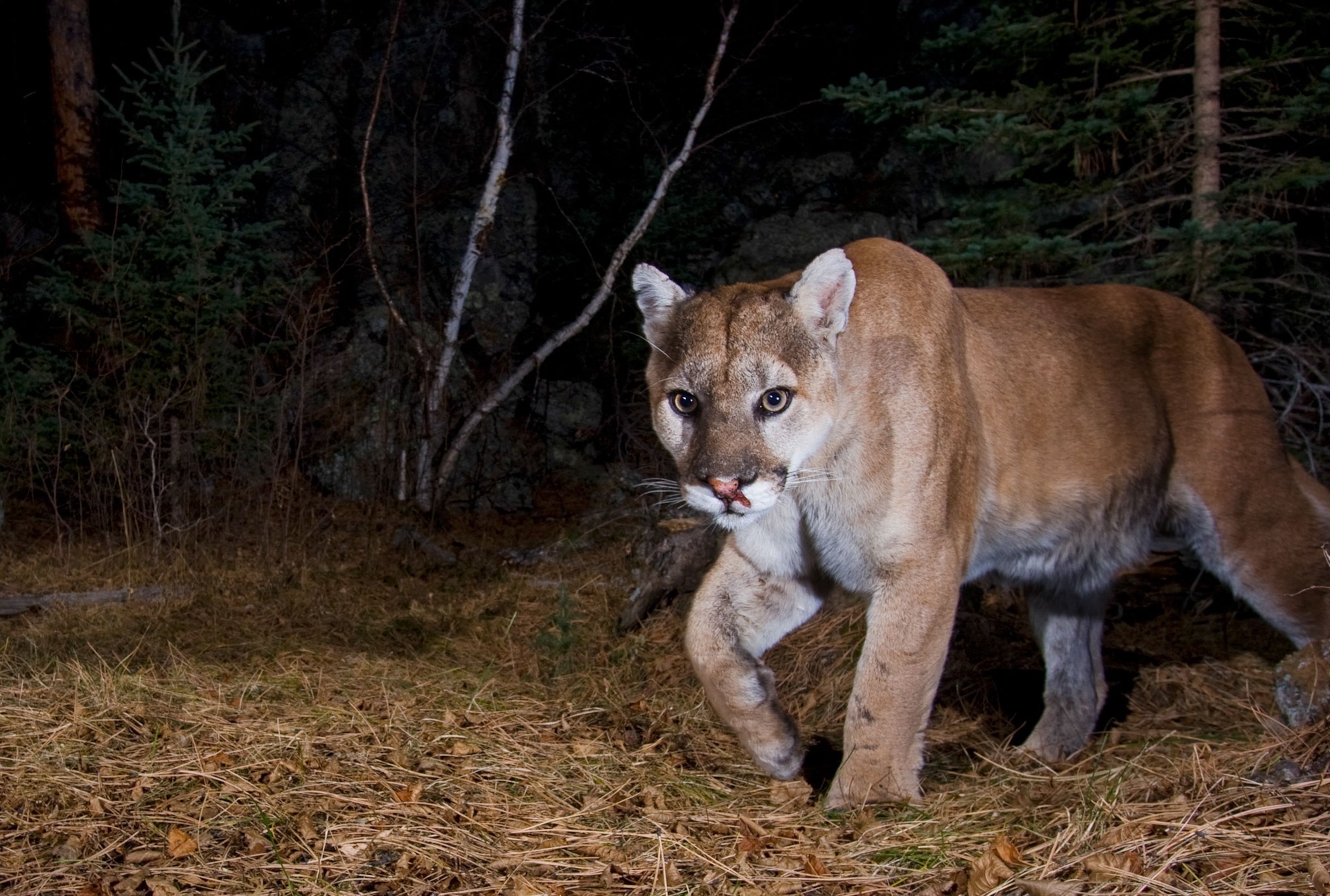
Cougars May Spread to U.S. Midwest Within Decades
A new model suggests the big cats will soon recolonize Arkansas, Missouri, and other parts of the American heartland.
The cougar may be returning to America’s heartland. And it could take just a few decades, according to a new model.
A cougar roaming the Midwest isn’t as unusual as TV westerns would have us believe: The big cats—also called mountain lions and pumas—used to be abundant in the region, but development and hunting killed them off nearly a century ago.
Cougars now dwell in western states, but have been slowly expanding their ranges eastward. The cougar's hypothetical return to middle America is based on an analysis of more than 40 years of data on cougar populations and 1.1 million square miles (3 million square kilometers) of U.S. habitat. (See a map of the cougar's eastward spread.)
For the new analysis, scientists also took into account factors such as how far female mountain lions migrate, locations of ideal cougar habitat (rugged and wooded terrain, far from humans and roads), and comparable population changes among other large predators. (See National Geographic's amazing pictures of cougars.)
What emerged is a complex model that suggests the animals may colonize parts of Arkansas and Missouri, and possibly sustain existing populations in the Dakotas and Nebraska, to the same extent as their western counterparts within 25 years.
The study, published online November 6 in the journal Ecological Modelling, is the first of its kind for U.S. mountain lions, notes study co-author Michelle LaRue, a conservation biologist at the University of Minnesota.
“If there’s one thing I hope comes from this, it’s to dispel the myths around cougars being dangerous to humans," she says. In most cases, cougars do not pose a threat to people. “You’re far more likely to be attacked by your neighbor’s dog than a big cat.”
More importantly, "large carnivores are good for ecosystems," she says.
As predators of herbivores, for instance, they help balance populations of other species. “It will be interesting to see how the ecosystem changes––if at all––if the cougars come back.” (Watch video: "Chasing a Mountain Lion in Hollywood's Urban Jungle.")
Ghost Cats
David A. Steen, a conservation biologist at Auburn University in Alabama, says the cougar-rich scenarios in the study seem plausible. “There are a lot of unknowns when conducting modeling exercises of this scope,” he says via email, adding that it's especially challenging to gather enough data.
One of the reasons for the statistics-driven study is that cougars are traditionally a tricky species to track, particularly in the central U.S. More than 800 confirmed cougar sightings have occurred in the region between 1990 and 2015, but they've often been shrouded in doubt. (Read the story "Ghost Cats" in National Geographic magazine.)
“For years, the conventional wisdom was that these [cougar] observations represented either released or escaped pets, isolated dispersers [roamers], or they were discounted as cases of mistaken identity,” Steen says.
In fact LaRue’s research shows most people who report seeing a cougar actually don't—it's usually a bobcat, large domestic cat, golden retriever, or even a deer seen from an odd angle. And when people think they’ve found cougar tracks, “It’s almost always some sort of canid [dog],” she says. (Follow LaRue on Twitter to play her game #CougarOrNot.)
Which brings up another point that should put some people's minds at ease: “Even if [the cats] do start to move in,” she says, “Most people will never see one. One of the indicators of good cougar habitat is [it's] somewhere humans are not.”
Follow Maggie Ryan Sandford on Twitter.
